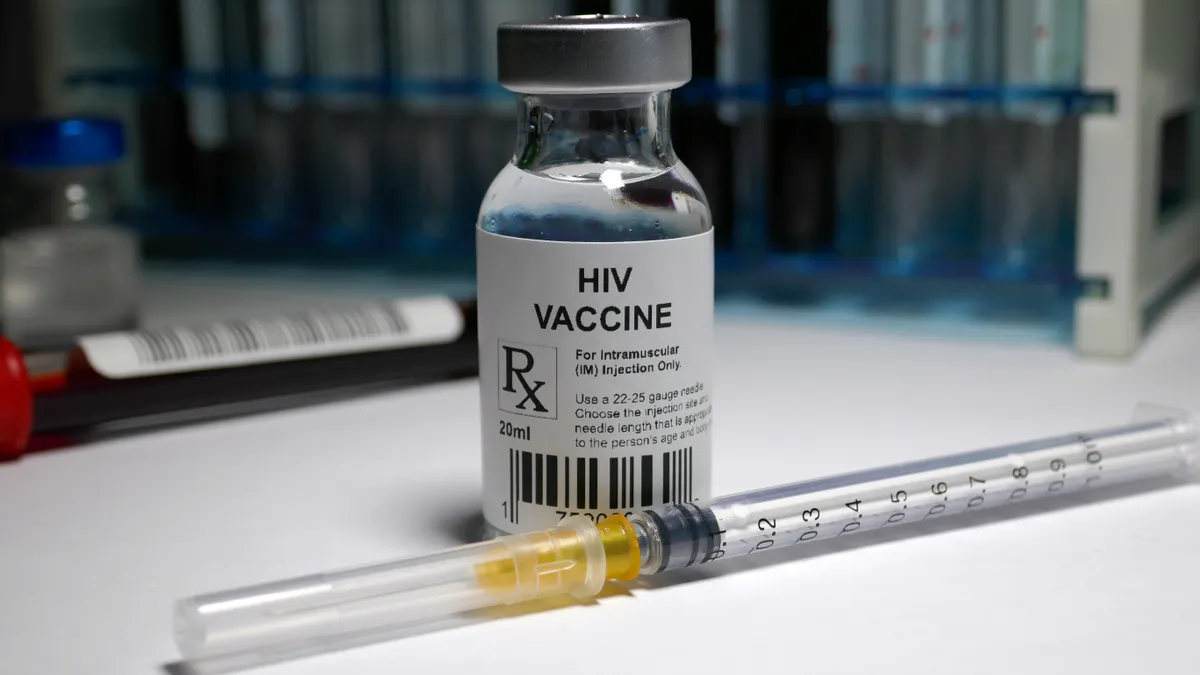On July 3, 1981, Rick Springfield was pining for “Jessie’s Girl,” Lady Diana was preparing to tie the knot, and Sandra Day O’Connor was on her way to becoming the first woman to sit on the Supreme Court. It was also the day the first major reporting on what is now known as HIV and AIDS appeared in a major media outlet: The headline “Rare cancer seen in 41 homosexuals” was buried deep in The New York Times.
Since then, researchers and doctors have put forth great effort to understand and treat patients with HIV. We now know it isn’t a form of cancer, but rather a virus that inserts itself into the DNA of a human host and attacks the body’s immune system. Antiretroviral therapies have allowed many with the virus to live longer, healthier lives. Yet, a widely available cure or vaccine to prevent infection have remained elusive.
The virus is a particularly wily opponent — it commandeers the very immune cells responsible for destroying it. So despite these advances only one out of the seven HIV vaccine candidates that have completed efficacy trials has shown modest success, says Dagna Laufer, vice president of clinical development at IAVI, a nonprofit infectious disease research organization.
But defeats of the past are lessons learned, Laufer says. Over the past two decades, advances in the immunology and gene editing fields have breathed new life into HIV research and marked a potential turning point in the mission to end the disease.
“We're in a new era and a very exciting time for HIV vaccine development,” Laufer says. “If you looked at an immunology textbook 10 years ago, it wouldn't even look like what's happening today. The HIV field has gone through so much advancement in terms of techniques and tools, it's just incredible.”
As researchers head into this new chapter, we’re examining two companies with technologies that tackle the issue from different angles — one aims to prevent infections and the other hopes to cure existing cases — both with the goal of ending the virus’ 40-year scourge.
The search for a vaccine
IAVI is conducting a series of iterative clinical trials designed to test whether the administration of HIV immunogens can stimulate the immune system’s B cells to begin developing antibodies, known as broadly neutralizing antibodies (bNABs), that can defeat many different variants of HIV.
IAVI began the G002 phase 1 trial in January with partner Moderna. The vaccine candidate uses engineered HIV envelope proteins delivered via mRNA, building on a previous trial called IAVI G001, in which the vaccine delivered the same material through a protein and showed initial positive results.
Laufer says the hope is that using mRNA as the delivery vehicle in this trial will allow IAVI to speed up production of the materials while yielding similar results to G001.
“If you looked at an immunology textbook 10 years ago, it wouldn’t even look like what’s happening today. The HIV field has gone through so much advancement in terms of techniques and tools, it’s just incredible.”

Dagna Laufer
IAVI vice president and head of clinical development
As the vaccine development program progresses, the team will deliver sequential booster shots to participants that they hope will slowly teach the body to create the antibodies. Laufer says it's unclear how many different boosters will need to be administered and emphasizes that the candidate is not along the product development path yet.
“You just don't go from one to 10 or, A to Z,” she says. “We don't expect to have a vaccine in the next year or even maybe in the next 10 years. But we know that it is going to take a while to figure out what the steps are.”
The approach is based on a series of studies from 2009 which found that some HIV patients naturally develop bNABs, Laufer says, adding that this process takes many years and, by the time they are created, it's often too late for the patient. IAVI’s candidate would provide vaccine immunogens to kickstart the development of bNABs in the body long before an HIV infection occurs.
The nonprofit is also involved in several other vaccine trials including one looking at an engineered trimeric protein immunogen and another focused on T-cell responses led by the Globally Relevant AIDS Vaccine Europe-Africa Trials Partnership (GREAT).
“We will support and hope that all of the researchers come through because that’s really the only way that we’re actually going to be able to end this [epidemic],” Laufer says. “I think that vaccines are the nail in the coffin, but we really understand that there are so many ways to deal with this virus.”
A potential cure
While the hunt for a vaccine continues, Excision BioTherapeutics, a clinical-stage biotech company, thinks it’s found a treatment pathway for HIV with a gene-editing candidate it says could be a “one-time curative treatment option.”
That candidate, EBT-101, is a CRISPR-based therapy designed to remove large sections of the HIV DNA that takes over a patient's cells. The technology has so far demonstrated the first and only cure in mice and primate forms of HIV and a phase 1/2 human trial is set to begin in the next few weeks.
Excision CEO, Daniel Dornbusch, says the company’s platform technology, which employs CRISPR-Cas9 and dual guide RNAs, minimizes the potential for vaccine mutation and off-target effects.
The main obstacle to using gene editing technology on viruses like HIV is the virus’ ability to mutate around single gene cuts, Dornbusch says. But, for years scientists struggled to figure out how to make two or more cuts in a virus’ DNA.
That’s where the CRISPR-Cas9 technology, licensed to Excision, comes in. It allows the company to fit the two guiding RNAs into a transporting vector and deliver the vaccine in one go, Dornbusch says
So far, preclinical results have shown that “the potential for off-target cuts … is almost in a different ballpark,” Dornbusch says. “One of the questions the FDA always has with gene therapy is off-target editing … and we’ve got a new publication showing just how different this approach is and the very minimal likelihood of an off-target effect.”
While EBT-101 is still early in the development process, Dornbusch admits that the drug likely won’t be cheap if it reaches the finish line.
“It’s a gene therapy, so we don’t expect it to be able to come down to a dollar. This will be relatively expensive,” he suggested, but noted that the scale of the HIV markets — and other infectious disease markets the company is targeting, including Herpes and Hepatitis B — could bring down the price compared to other gene therapies.
“We look at the history of monoclonal antibodies as our model,” he said. “When they started in the 1980s, they were extremely expensive and challenging to manufacture. But, the scale and the cost to manufacture monoclonal antibodies has come down many fold over time. We’re hoping to see the same thing.”
Asking those questions and associating a product with the word “cure” this early in the development process might seem audacious to some — but Dornbusch says that’s the whole point of Excision.
“All of the other therapies [that treat HIV infection] address the disease progression in different ways, but they don’t go right at the source, the DNA,” he says. “This is really one of the first to do that.”









